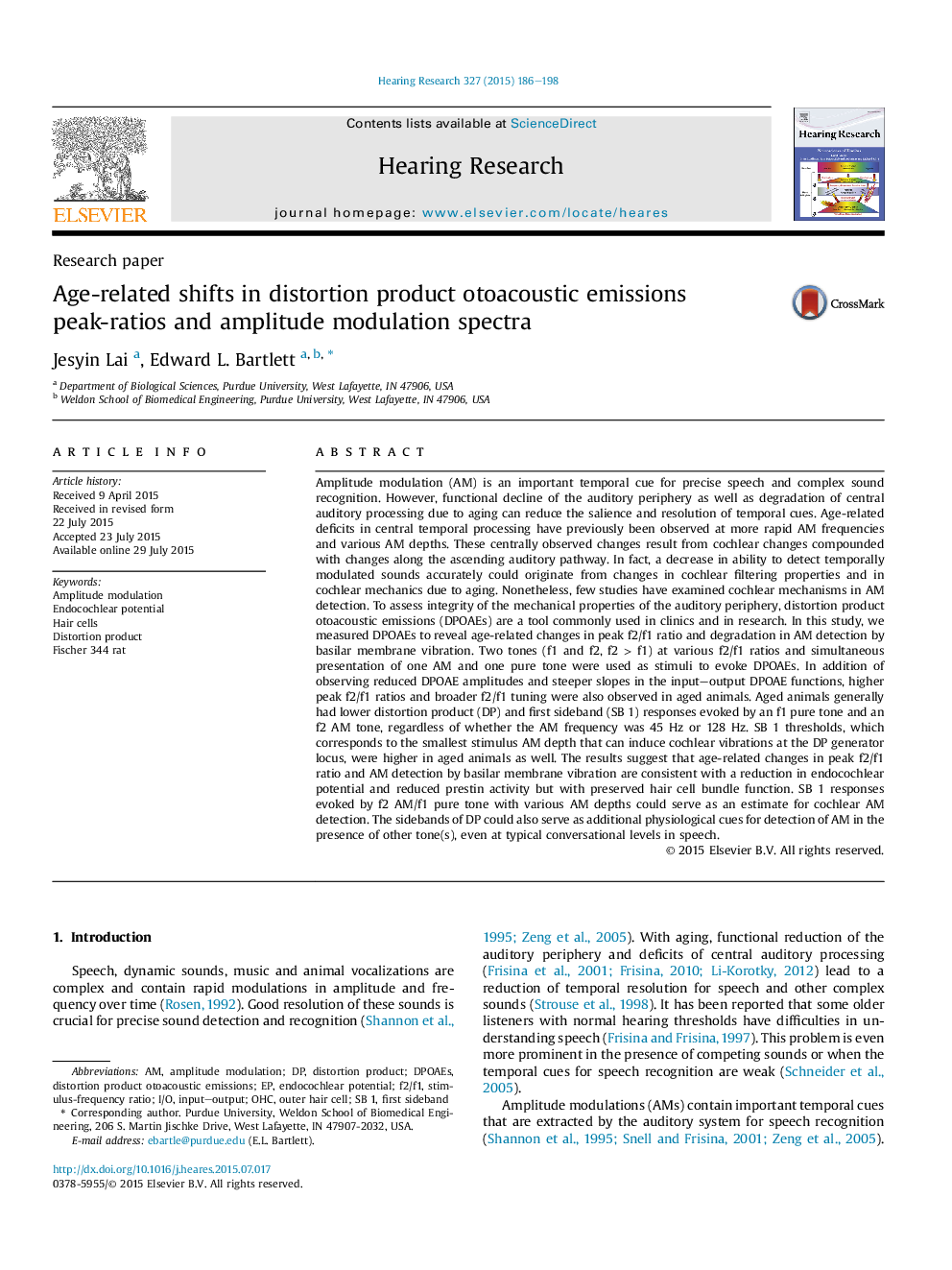| کد مقاله | کد نشریه | سال انتشار | مقاله انگلیسی | نسخه تمام متن |
|---|---|---|---|---|
| 6287331 | 1615573 | 2015 | 13 صفحه PDF | دانلود رایگان |
- DPOAEs of pure and amplitude-modulated tones were tested in young and old rats.
- DPOAE amplitudes, peak-ratios and temporal detection were altered in old rats.
- Age-related changes were correlated more with endocochlear potential reduction.
- Distortion product sidebands may serve as additional cues for AM detection.
Amplitude modulation (AM) is an important temporal cue for precise speech and complex sound recognition. However, functional decline of the auditory periphery as well as degradation of central auditory processing due to aging can reduce the salience and resolution of temporal cues. Age-related deficits in central temporal processing have previously been observed at more rapid AM frequencies and various AM depths. These centrally observed changes result from cochlear changes compounded with changes along the ascending auditory pathway. In fact, a decrease in ability to detect temporally modulated sounds accurately could originate from changes in cochlear filtering properties and in cochlear mechanics due to aging. Nonetheless, few studies have examined cochlear mechanisms in AM detection. To assess integrity of the mechanical properties of the auditory periphery, distortion product otoacoustic emissions (DPOAEs) are a tool commonly used in clinics and in research. In this study, we measured DPOAEs to reveal age-related changes in peak f2/f1 ratio and degradation in AM detection by basilar membrane vibration. Two tones (f1 and f2, f2Â >Â f1) at various f2/f1 ratios and simultaneous presentation of one AM and one pure tone were used as stimuli to evoke DPOAEs. In addition of observing reduced DPOAE amplitudes and steeper slopes in the input-output DPOAE functions, higher peak f2/f1 ratios and broader f2/f1 tuning were also observed in aged animals. Aged animals generally had lower distortion product (DP) and first sideband (SB 1) responses evoked by an f1 pure tone and an f2 AM tone, regardless of whether the AM frequency was 45Â Hz or 128Â Hz. SB 1 thresholds, which corresponds to the smallest stimulus AM depth that can induce cochlear vibrations at the DP generator locus, were higher in aged animals as well. The results suggest that age-related changes in peak f2/f1 ratio and AM detection by basilar membrane vibration are consistent with a reduction in endocochlear potential and reduced prestin activity but with preserved hair cell bundle function. SB 1 responses evoked by f2 AM/f1 pure tone with various AM depths could serve as an estimate for cochlear AM detection. The sidebands of DP could also serve as additional physiological cues for detection of AM in the presence of other tone(s), even at typical conversational levels in speech.
Journal: Hearing Research - Volume 327, September 2015, Pages 186-198
